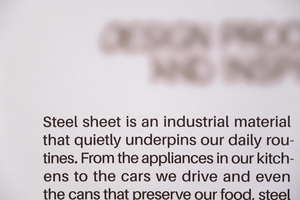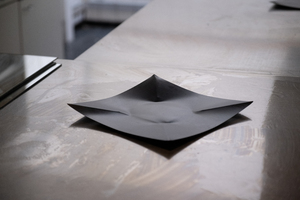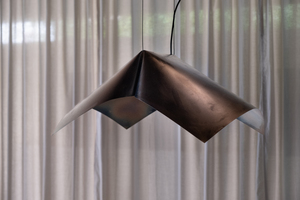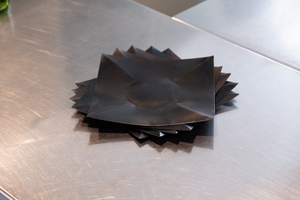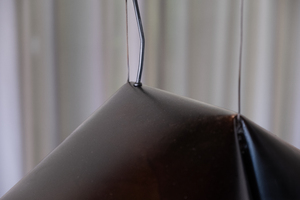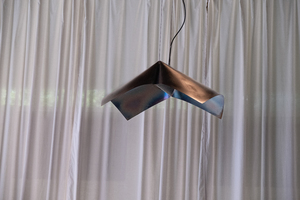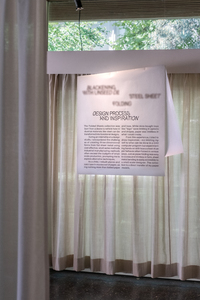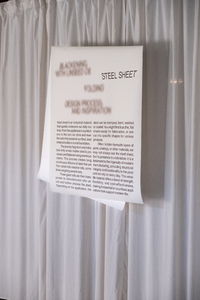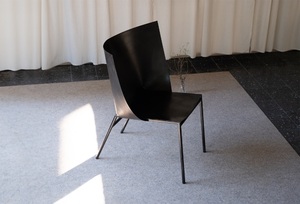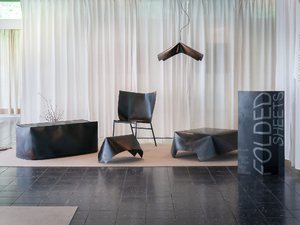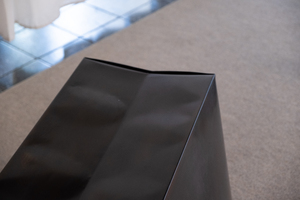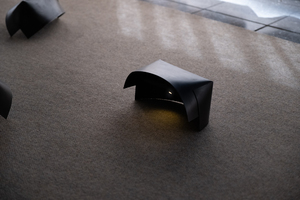"Produktdesign"
| Begriff | Produktdesign |
| Metakey | Fachgruppe (institution:field_of_study) |
| Typ | Keyword |
| Vokabular | HfG |
134 Inhalte
- Seite 1 von 12
Folded Sheets/ Infopanels
- Titel
- Folded Sheets/ Infopanels
- Autor/in
- Schlagworte
- Datierung
- 2025
- Titel
- Folded Sheets/ Infopanels
- Urheberrechtshinweis
- © John Weber
- Rechtsschutz/Lizenz
- Freigabe Nutzung HfG
- Medienersteller/in
- Medien-Beschreibung (en)
- The narrative of this exhivition was displayed on three folded paper info panels. Paper was folded on a thin rope.
- The narrative of this exhivition was displayed on three folded paper info panels. Paper was folded on a thin rope.
- Projektleiter/in
- Studiengang
- Typ der Abschlussarbeit
- Importiert am
- 15.07.2025
- Übergeordnete Sets
- 1
Folded Sheets/ Plates
- Titel
- Folded Sheets/ Plates
- Autor/in
- Schlagworte
- Datierung
- 2025
- Titel
- Folded Sheets/ Plates
- Urheberrechtshinweis
- © John Weber
- Rechtsschutz/Lizenz
- Freigabe Nutzung HfG
- Medienersteller/in
- Medien-Beschreibung (en)
- The "Frosch" is a phenomenon in sheet metal processing where tension is created in the material through deformation. By applying force against this tension, the sheet metal "springs" back with an audible snap into an opposite shape. The plate series utilizes this effect to create a concave form that serves as a plate or bowl.
- Projektleiter/in
- Studiengang
- Typ der Abschlussarbeit
- Importiert am
- 15.07.2025
- Übergeordnete Sets
- 1
Folded Sheets/ Pendant Lamp
- Titel
- Folded Sheets/ Pendant Lamp
- Autor/in
- Schlagworte
- Datierung
- 2025
- Titel
- Folded Sheets/ Pendant Lamp
- Urheberrechtshinweis
- © John Weber
- Rechtsschutz/Lizenz
- Freigabe Nutzung HfG
- Medienersteller/in
- Medien-Beschreibung (en)
- The pendant lamp uses a folding technique that curves the edges inward, creating a soft,
rounded form. This shape supports two steel wires that suspend the lamp from the ceiling.
The exterior is blackened with linseed oil, while the interior is heat-blued, resulting in a
reflective and slightly iridescent surface inside, contrasted by the subtle, matte black finish
on the outside.
- The pendant lamp uses a folding technique that curves the edges inward, creating a soft,
- Projektleiter/in
- Studiengang
- Typ der Abschlussarbeit
- Importiert am
- 15.07.2025
- Übergeordnete Sets
- 1
Folded Sheets/ Plates
- Titel
- Folded Sheets/ Plates
- Autor/in
- Schlagworte
- Datierung
- 2025
- Titel
- Folded Sheets/ Plates
- Urheberrechtshinweis
- © John Weber
- Rechtsschutz/Lizenz
- Freigabe Nutzung HfG
- Medienersteller/in
- Medien-Beschreibung (en)
- The "Frosch" is a phenomenon in sheet metal processing where tension is created in the material through deformation. By applying force against this tension, the sheet metal "springs" back with an audible snap into an opposite shape. The plate series utilizes this effect to create a concave form that serves as a plate or bowl.
- Projektleiter/in
- Studiengang
- Typ der Abschlussarbeit
- Importiert am
- 15.07.2025
- Übergeordnete Sets
- 1
Folded Sheets/ Pendant Lamp
- Titel
- Folded Sheets/ Pendant Lamp
- Autor/in
- Schlagworte
- Datierung
- 2025
- Titel
- Folded Sheets/ Pendant Lamp
- Urheberrechtshinweis
- © John Weber
- Rechtsschutz/Lizenz
- Freigabe Nutzung HfG
- Medienersteller/in
- Medien-Beschreibung (en)
- Pendant Lamp uses inward folds to tension the flat sheet into a convex shape. The inward folds hold tight a steel wire, used to hang the obejct into the air. Recessed LEDs light the inside of the Lamp, showcasing the volume created by tension.
- Projektleiter/in
- Studiengang
- Typ der Abschlussarbeit
- Importiert am
- 15.07.2025
- Übergeordnete Sets
- 1
Folded Sheets/ Pendant Lamp
- Titel
- Folded Sheets/ Pendant Lamp
- Autor/in
- Schlagworte
- Datierung
- 2025
- Titel
- Folded Sheets/ Pendant Lamp
- Urheberrechtshinweis
- © John Weber
- Rechtsschutz/Lizenz
- Freigabe Nutzung HfG
- Medienersteller/in
- Medien-Beschreibung (en)
- Pendant Lamp uses inward folds to tension the flat sheet into a convex shape. The inward folds hold tight a steel wire, used to hang the obejct into the air. Recessed LEDs light the inside of the Lamp, showcasing the volume created by tension.
- Projektleiter/in
- Studiengang
- Typ der Abschlussarbeit
- Importiert am
- 15.07.2025
- Übergeordnete Sets
- 1
Folded Sheets/ Infopanels
- Titel
- Folded Sheets/ Infopanels
- Autor/in
- Schlagworte
- Datierung
- 2025
- Titel
- Folded Sheets/ Infopanels
- Urheberrechtshinweis
- © John Weber
- Rechtsschutz/Lizenz
- Freigabe Nutzung HfG
- Medienersteller/in
- Medien-Beschreibung (en)
- The narrative of this exhivition was displayed on three folded paper info panels. Paper was folded on a thin rope.
- The narrative of this exhivition was displayed on three folded paper info panels. Paper was folded on a thin rope.
- Projektleiter/in
- Studiengang
- Typ der Abschlussarbeit
- Importiert am
- 15.07.2025
- Übergeordnete Sets
- 1
Folded Sheets/ Infopanels
- Titel
- Folded Sheets/ Infopanels
- Autor/in
- Schlagworte
- Datierung
- 2025
- Titel
- Folded Sheets/ Infopanels
- Urheberrechtshinweis
- © John Weber
- Rechtsschutz/Lizenz
- Freigabe Nutzung HfG
- Medienersteller/in
- Medien-Beschreibung (en)
- The narrative of this exhivition was displayed on three folded paper info panels. Paper was folded on a thin rope.
- The narrative of this exhivition was displayed on three folded paper info panels. Paper was folded on a thin rope.
- Projektleiter/in
- Studiengang
- Typ der Abschlussarbeit
- Importiert am
- 15.07.2025
- Übergeordnete Sets
- 1
Folded Sheets/ Chair
- Titel
- Folded Sheets/ Chair
- Autor/in
- Schlagworte
- Datierung
- 2025
- Titel
- Folded Sheets/ Chair
- Urheberrechtshinweis
- © John Weber
- Rechtsschutz/Lizenz
- Freigabe Nutzung HfG
- Medienersteller/in
- Medien-Beschreibung (en)
- The folded Chair from my Diploma collection ”Folded Sheets“ uses a rectangular steel
sheet to create a comfortable chair shell. The sheet it cut and folded to wrap around the
frame and create a round shell like shape under tension. This tension makes for a comfort-
able round shape that slightly leans back as you press your back into it. The shell and the
frame hold together by tension. No screws used, only the tension of the steel sheet.
- The folded Chair from my Diploma collection ”Folded Sheets“ uses a rectangular steel
- Projektleiter/in
- Studiengang
- Typ der Abschlussarbeit
- Importiert am
- 15.07.2025
- Übergeordnete Sets
- 1
Folded Sheets
- Titel
- Folded Sheets
- Autor/in
- Schlagworte
- Datierung
- 2025
- Titel
- Folded Sheets
- Urheberrechtshinweis
- © John Weber
- Rechtsschutz/Lizenz
- Freigabe Nutzung HfG
- Medienersteller/in
- Projektleiter/in
- Studiengang
- Typ der Abschlussarbeit
- Importiert am
- 15.07.2025
- Übergeordnete Sets
- 1
Folded Sheets/ Bench
- Titel
- Folded Sheets/ Bench
- Autor/in
- Schlagworte
- Datierung
- 2025
- Titel
- Folded Sheets/ Bench
- Urheberrechtshinweis
- © John Weber
- Rechtsschutz/Lizenz
- Freigabe Nutzung HfG
- Medienersteller/in
- Medien-Beschreibung (en)
- The bench is a blend of two steel sheet folding techniques. The top surface is expertly brake-formed, creating three distinct folds that not only ensure a comfortable seating area but also allow the rectangular seating surface to curve gracefully towards the ground. This design is further enhanced by a strategic cut and slide method, which introduces tension to the bench's feet and contributes to its rounded base.
A central crease in the seating surface adds stability and serves as a water drainage channel on both sides. The rounded shape allows the bench to rest on the ground only at its two sides, with the front and back elegantly curving upwards. This design lends the entire structure a lighter, more dynamic feel, making it both functional and aesthetically pleasing.
- The bench is a blend of two steel sheet folding techniques. The top surface is expertly brake-formed, creating three distinct folds that not only ensure a comfortable seating area but also allow the rectangular seating surface to curve gracefully towards the ground. This design is further enhanced by a strategic cut and slide method, which introduces tension to the bench's feet and contributes to its rounded base.
- Projektleiter/in
- Studiengang
- Typ der Abschlussarbeit
- Importiert am
- 15.07.2025
- Übergeordnete Sets
- 1
Folded Sheets/ Shell
- Titel
- Folded Sheets/ Shell
- Autor/in
- Schlagworte
- Datierung
- 2025
- Titel
- Folded Sheets/ Shell
- Urheberrechtshinweis
- © John Weber
- Rechtsschutz/Lizenz
- Freigabe Nutzung HfG
- Medienersteller/in
- Projektleiter/in
- Studiengang
- Typ der Abschlussarbeit
- Importiert am
- 15.07.2025
- Übergeordnete Sets
- 1
